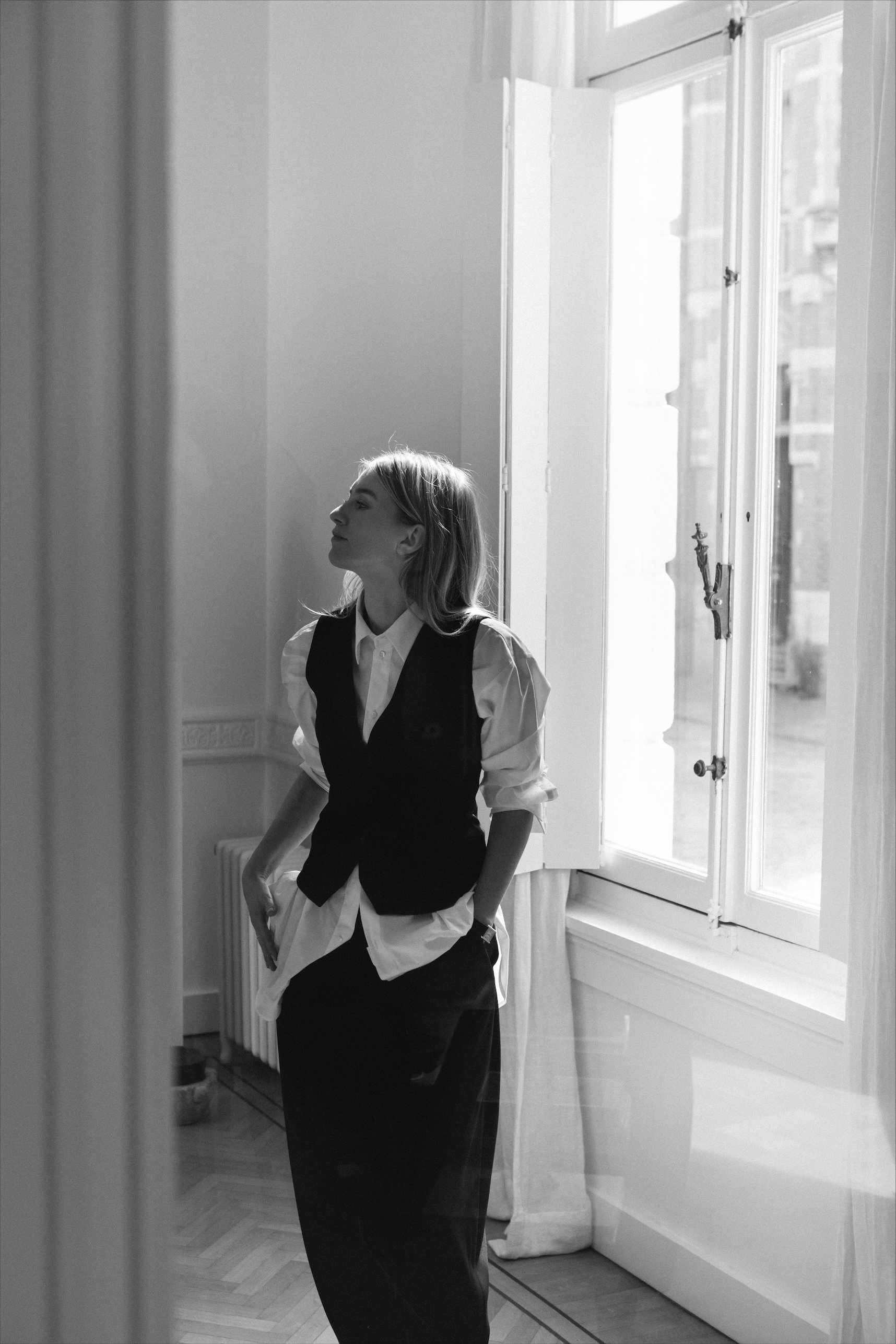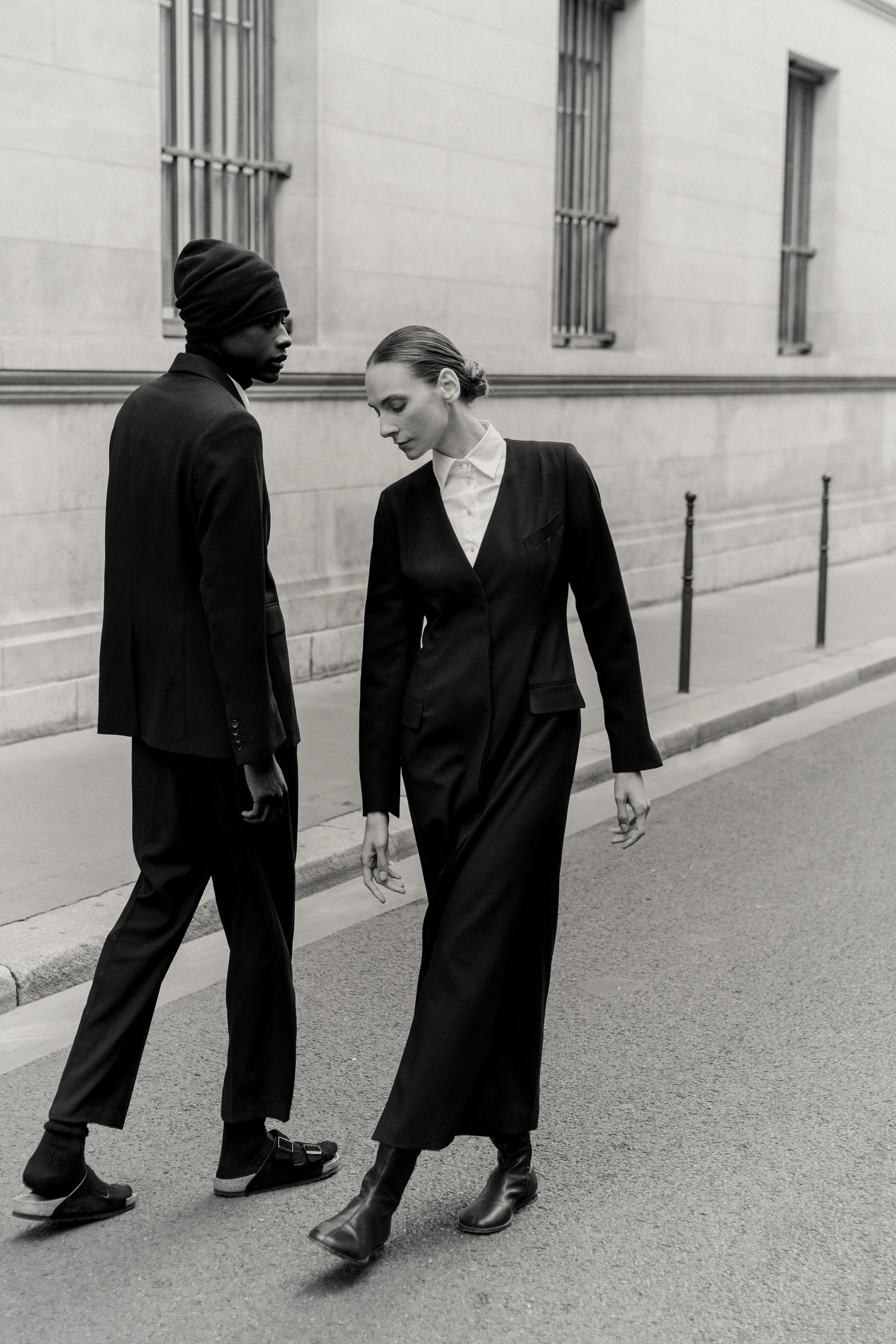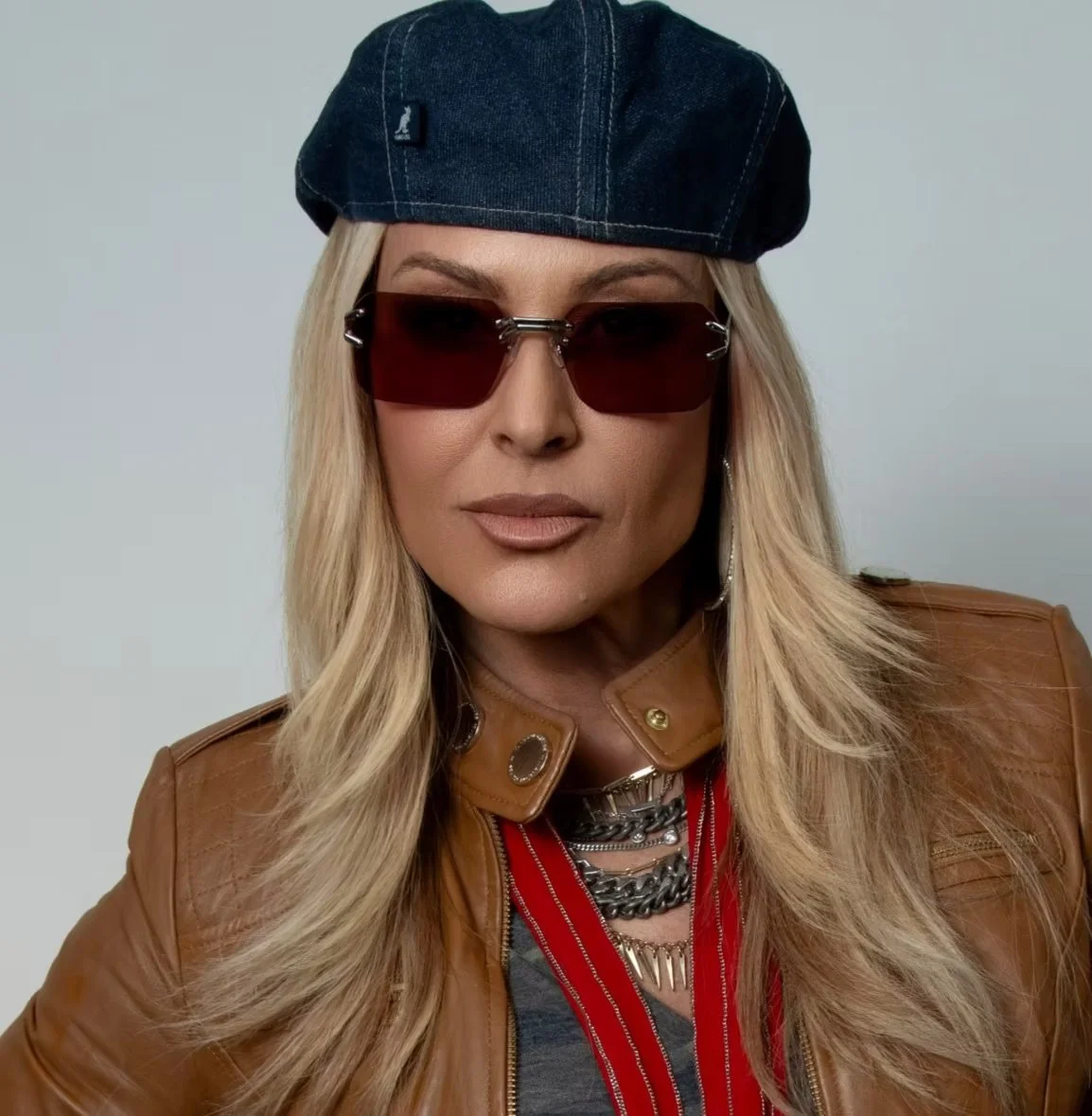The Brand That Wants You to Buy Less
Courtesy of La Collection
FLORENCE COOLS
The Brand That Wants You to Buy Less
By Bonnie Langedijk
The 1.5 trillion dollar global apparel industry isn’t slowing down. With most luxury brands producing at least four collections a year – excluding any additional projects or collaborations – there’s a constant stream of newness flooding the market. The industry has become a place of constant consumption, where consumers on average only wear clothes seven times before discarding them. Antwerp-based La Collection wanted to move away from this outdated approach. Founded by Florence Cools and her partner Artur Tadevosian in 2017, the duo set out to create a modern, conscious luxury brand. La Collection was quickly embraced by a group of like-minded consumers taking a more curated approach to building their wardrobe. The brand has an understated approach to design, valuing craftsmanship and responsibility above all else. We spoke with founder and creative director Florence Cools about her approach to design, buying less but better and the power of Instagram when building a brand.
Courtesy of La Collection
Courtesy of La Collection
Bonnie: You’re based in Antwerp. A city that most people know because of The Antwerp Six. It seems like most of the focus still lies on the past over the present. What has your experience been as a young designer?
Florence: I love Belgium and I love Antwerp. The heritage that Antwerp as a city carries is unique. It’s a privilege for young designers and brands to be a part of what the generations before us created. The culture of fashion that developed here is fascinating. Unfortunately, I do feel that the focus on the past is very prevalent here. It takes hard work for at least 10 or 15 years to prove yourself before even being considered as a respected designer. I hope that this mindset and visibility of new designers will evolve and that new designers will have an outlet the way they did in the past. It’s something that I think happens across the industry, where brands want to change but there’s a fear of being the first to do things differently. Sometimes it can seem like we’re stuck in this old pattern.
“The La Collection WOMAN doesn’t buy clothes for name tags. She buys products she loves and she’s knowledgeable about quality.”
I completely agree. You launched La Collection in 2017. You could probably put your first and last collections next to each other and they would go together seamlessly. Rather than playing the game of following trends you’ve stayed true to your own vision. How have you been able to do that?
Florence: That’s the only way I want to do it. Honesty and transparency are the most important to me and are key staples in how we built the business and how we interact with consumers. We want to share where things are produced, and why we do things a certain way. Share as much information as possible. We’re also in a bit of a luxurious position where people love and appreciate what we do.
Part of it is also about longevity. I see so many clothes that feel like they’ve just been produced for Instagram.
Florence: I design for real women. The La Collection woman doesn’t buy clothes for name tags. She buys products she loves and she’s knowledgeable about quality. We’re a luxury brand in the sense that we’re in a higher price range, but only because of the price of the fabric and the craftsmanship that goes into making the garment. The consumer doesn’t pay for the branding. We appeal to a conscious woman. A woman who wants clothes that she can wear to work, or wear to dinner. She looks for products that she can live her life in. She’s not one to just sit in a corner and look pretty. [I don’t think my approach to design] limits creativity. I think it amplifies it. You’re trying to create something wearable that’s completely different from what’s already available.
Courtesy of La Collection
I can imagine your customer has quite a holistic approach, where the way she curates her wardrobe is in line with her approach to buying furniture or art.
Florence: Definitely. It’s been great for us as we’ve found this gap in the market where we’ve been welcomed with open arms. We’ve had to fight for many things, but the appreciation for the brand and our designs have always come organically. I think our approach as a brand has played a big part in that. We create timeless collections. You should be able to wear almost every piece year-round and it shouldn’t matter whether you’re wearing it in 2017 or 2024. That’s our vision. I love a curated wardrobe. Working with that vision in mind creates a specific setting and that’s why we attract a certain type of audience.
In the current fashion world, focusing on timelessness isn’t always the easiest way of doing business. What is the current setup?
Florence: We create two collections a year. We originally started working from the showroom point of view but we quickly figured out that producing four collections a year means showing a lot of newness. It just didn’t make sense and I’m very bad at doing things that in my opinion don’t add value. We brainstormed with the team and noticed our collections were relatively big. [With four collections a year] different collections end up in store together. For us, that resulted in styles that overlapped or were very similar hanging next to each other on a rail. I ended up designing a new version of an existing style, while I still loved the old version. I couldn’t justify all the work, energy, and time that went into it. We don’t need more overconsumption. It might sound like a bit of a PR spiel, but I truly believe that. It might not be the most commercial thing to say that we should all buy less, but it’s something that the fashion industry and the world at large need to hear. We all need to just buy the things we truly love. Buying something should take effort. There’s no better feeling than saving up for a specific piece.
It’s so important to be thoughtful about where you spent your money. It also makes you value it more.
Florence: Absolutely. If you invest in pieces made from quality materials, you can still wear them five years down the line. And if you have a loose hem, you repair it. It’s way more rewarding to build a wardrobe that transcends seasons than buying a new wardrobe and dumping it once the season ends. That just seems so exhausting to me.
Ideally, people would put the same consideration into curating their wardrobe as they would when curating an art collection. Or put the same thought into it as they would when buying a new couch.
Florence: I believe it’s the designer's responsibility, the creative director, the production manager, and the people working in stores to share every step of the journey an item takes before it gets to you as a consumer. Having all the information makes consumers show more respect and appreciation for the garment. It also puts pressure on the people who are producing it, to do so in the right way. I do feel like brands are improving in this aspect.
Definitely. You launched your first unisex collection earlier this year. What made you decide to move into menswear?
Florence: It links into what we were just talking about. People who have the La Collection mindset are often the people who enjoy having a curated wardrobe. How great is it to buy a beautiful coat you can both wear? For the collection, we design from menswear patterns. The whole menswear-inspired, oversized look has always been part of our DNA anyway. We like combining a feminine fabric with a more masculine cut.
La Collection is very much an extension of your personal style. Your personal Instagram could be viewed as an additional marketing tool where you show the brand in everyday settings. How important is social media to you as a business tool and do you ever think about how you separate yourself from the brand?
Florence: I do receive collaboration requests from companies, but I always explain that I don’t do them. I only post La Collection. In a sense, La Collection and I are one and the same. Instagram has allowed us to develop a voice of our own. To be our own magazine or press outlet. As a new brand or company, it’s such a great tool for sharing your vision with the world and that’s also one of the reasons why I use it. It’s not necessarily about showing myself. I’m just proud of my pieces, and the fact that I designed them, and we have created them. And from experience, I know it works. In the end, we’re a business, so if I share myself wearing the garments results in people discovering the brand, I’ve succeeded.
It’s also about understanding how to use it. So many brands play it safe and only post very polished imagery. You show how you wear La Collection in everyday settings, which is more relatable.
Florence: The La Collection Instagram account combined with our lifestyle perspective on our website called THE EDIT showcase the brand universe. The art we love, interviews with inspiring people but also the campaigns we shoot. Next to it, we have my private account – which isn’t private at all – which showcases how I wear the products but also what inspires me. Like the architecture in Antwerp, certain museums, or artists. It’s my mood board. Back in the day you wouldn’t share what inspires you, because you would be scared of your competitor doing the same thing. But everyone copies each other, so we shouldn’t have that fear of lifting the curtain anymore.
Completely. You don’t need the press to translate your story as you have a direct line to your audience. That’s invaluable.
Florence: I agree. It’s a freeing feeling to have that channel to own yourself and share your message and vision. It truly creates so many of our own opportunities and allows many small businesses to have the power to communicate and reach new audiences without needing too much help from others.
This interview has been edited and condensed for clarity.












